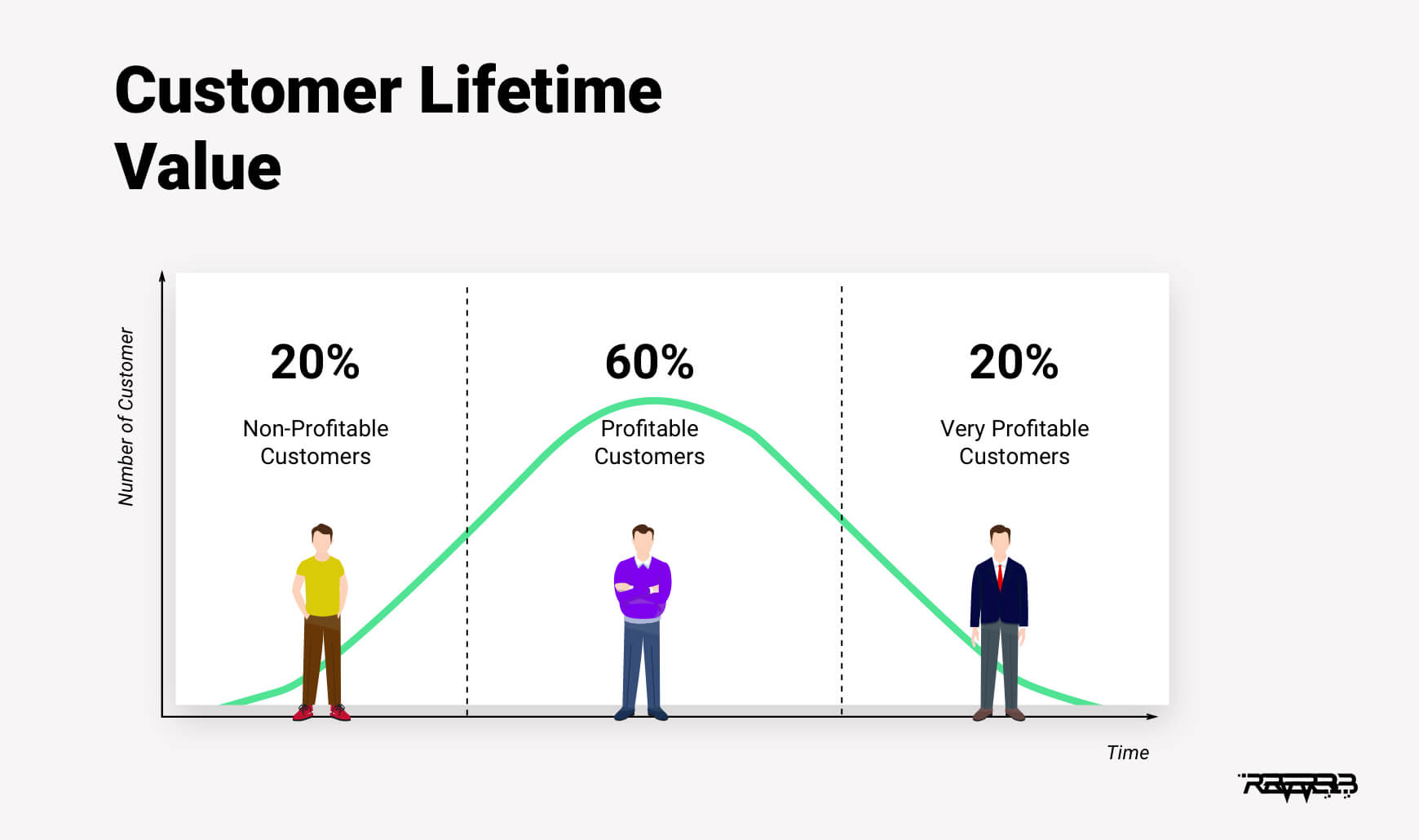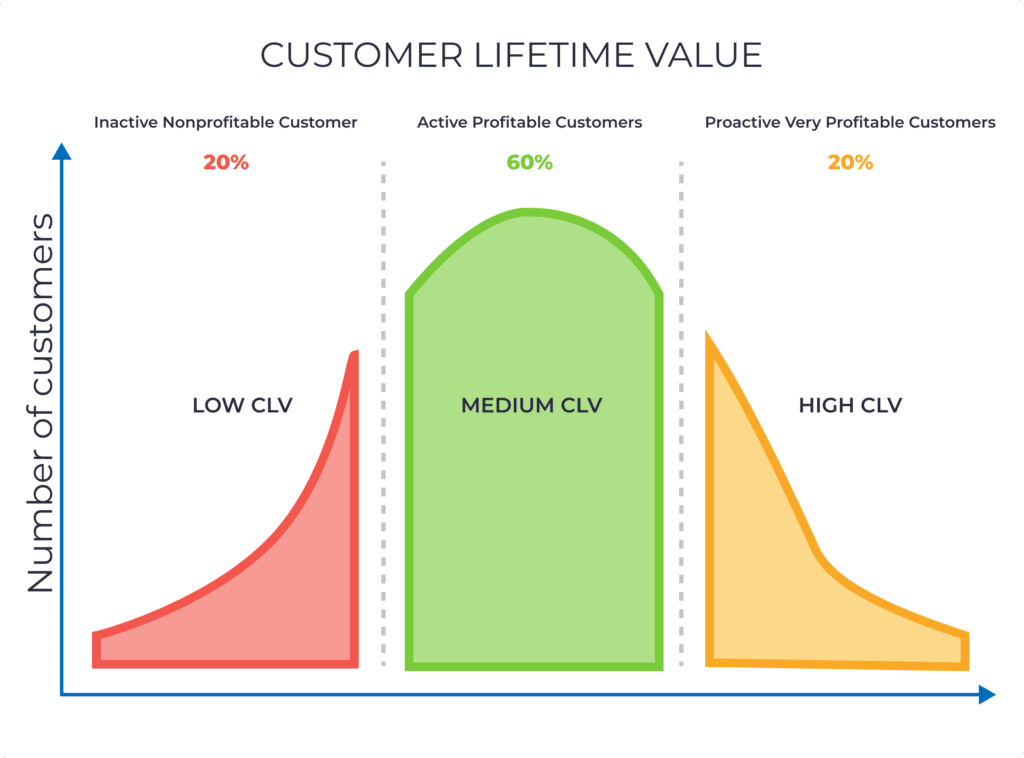
CRM and Customer Lifetime Value Analysis: A Synergistic Approach to Sustainable Growth
In the modern business landscape, where competition is fierce and customer loyalty is increasingly elusive, companies are seeking strategies to maximize the value of their customer relationships. Customer Relationship Management (CRM) systems have emerged as indispensable tools for managing these relationships, but their true potential lies in their ability to facilitate Customer Lifetime Value (CLV) analysis. By combining the power of CRM with the insights derived from CLV, businesses can make data-driven decisions that enhance customer satisfaction, boost retention rates, and ultimately drive sustainable growth.
Understanding Customer Lifetime Value (CLV)
Customer Lifetime Value (CLV) is a prediction of the net profit attributed to the entire future relationship with a customer. It’s a forward-looking metric that estimates the total revenue a customer will generate for a business over the course of their engagement, minus the costs associated with acquiring and serving that customer.
CLV is not just a theoretical concept; it’s a practical tool that informs critical business decisions, including:
- Customer Acquisition: CLV helps businesses identify the most profitable customer segments to target with their marketing efforts.
- Customer Retention: By understanding the value of retaining specific customer groups, companies can tailor retention strategies to maximize their impact.
- Customer Segmentation: CLV enables businesses to segment customers based on their potential value, allowing for personalized marketing and service approaches.
- Resource Allocation: CLV helps businesses allocate resources effectively by prioritizing high-value customers and optimizing customer service strategies.
The Role of CRM in CLV Analysis
CRM systems are designed to capture, store, and analyze customer data from various touchpoints, including sales, marketing, and customer service. This centralized data repository provides the foundation for accurate and insightful CLV analysis. Here’s how CRM systems contribute to the CLV process:
-
Data Collection and Integration: CRM systems collect data from a wide range of sources, including website interactions, social media engagements, email communications, and purchase history. By integrating data from these disparate sources, CRM systems provide a comprehensive view of each customer’s interactions with the business.
-
Customer Segmentation: CRM systems enable businesses to segment customers based on demographic, behavioral, and transactional data. This segmentation allows for more targeted CLV analysis, as different customer segments may have varying lifetime values.
-
Behavioral Tracking: CRM systems track customer behavior over time, providing insights into their purchasing patterns, engagement levels, and satisfaction levels. This behavioral data is crucial for predicting future customer behavior and estimating CLV.
-
Sales and Marketing Automation: CRM systems automate sales and marketing processes, allowing businesses to track the effectiveness of their campaigns and identify the most profitable channels for customer acquisition and retention.
-
Customer Service Management: CRM systems facilitate customer service interactions, providing a centralized platform for managing customer inquiries, complaints, and feedback. By tracking customer service interactions, businesses can identify opportunities to improve customer satisfaction and reduce churn.
The Synergy Between CRM and CLV Analysis
The combination of CRM and CLV analysis creates a powerful synergy that enables businesses to make data-driven decisions that enhance customer relationships and drive sustainable growth. Here’s how this synergy works in practice:
- Identifying High-Value Customers: CRM systems can identify customers with high CLV scores, allowing businesses to focus their marketing and service efforts on these valuable customers.
- Personalizing Customer Interactions: By understanding the needs and preferences of high-value customers, businesses can personalize their interactions to enhance customer satisfaction and loyalty.
- Tailoring Retention Strategies: CLV analysis can identify customers who are at risk of churning, allowing businesses to implement targeted retention strategies to prevent customer attrition.
- Optimizing Marketing Campaigns: By tracking the CLV of customers acquired through different marketing channels, businesses can optimize their marketing campaigns to maximize their return on investment.
- Improving Customer Service: By analyzing customer service interactions and correlating them with CLV scores, businesses can identify opportunities to improve customer service and enhance customer satisfaction.
Benefits of Using CRM for CLV Analysis
- Improved Customer Retention: By identifying and addressing the needs of high-value customers, businesses can improve customer retention rates and reduce churn.
- Increased Revenue: By focusing on high-value customers and optimizing marketing campaigns, businesses can increase revenue and profitability.
- Enhanced Customer Satisfaction: By personalizing customer interactions and providing exceptional customer service, businesses can enhance customer satisfaction and loyalty.
- Better Resource Allocation: By understanding the CLV of different customer segments, businesses can allocate resources more effectively, maximizing their return on investment.
- Data-Driven Decision Making: By combining CRM data with CLV analysis, businesses can make data-driven decisions that are aligned with their overall business goals.
Implementing CRM for CLV Analysis
Implementing CRM for CLV analysis requires careful planning and execution. Here are some key steps to consider:
- Define Business Objectives: Clearly define the business objectives that you want to achieve with CLV analysis. This will help you focus your efforts and measure the success of your implementation.
- Choose the Right CRM System: Select a CRM system that meets your specific needs and requirements. Consider factors such as data integration capabilities, reporting features, and scalability.
- Data Integration: Integrate data from all relevant sources into your CRM system. This will provide a comprehensive view of each customer’s interactions with your business.
- Customer Segmentation: Segment your customers based on demographic, behavioral, and transactional data. This will allow for more targeted CLV analysis.
- CLV Calculation: Choose a CLV calculation method that is appropriate for your business. There are several different methods available, so it’s important to select one that accurately reflects the value of your customers.
- Analysis and Reporting: Analyze your CLV data to identify trends and insights. Use these insights to make data-driven decisions that improve customer relationships and drive sustainable growth.
- Continuous Improvement: Continuously monitor and refine your CLV analysis process. As your business evolves, your CLV models may need to be adjusted to reflect changes in customer behavior and market conditions.
Challenges and Considerations
- Data Quality: Accurate CLV analysis depends on high-quality data. Businesses must ensure that their CRM data is clean, complete, and up-to-date.
- Data Privacy: Businesses must comply with data privacy regulations when collecting and analyzing customer data.
- Model Complexity: CLV models can be complex and require specialized expertise. Businesses may need to hire data scientists or consultants to help them develop and implement CLV models.
- Changing Customer Behavior: Customer behavior is constantly evolving, so businesses must regularly update their CLV models to reflect these changes.
Conclusion
CRM and CLV analysis are powerful tools that can help businesses build stronger customer relationships, increase revenue, and drive sustainable growth. By leveraging the data collection and analysis capabilities of CRM systems, businesses can gain valuable insights into the lifetime value of their customers and make data-driven decisions that enhance customer satisfaction, boost retention rates, and ultimately improve their bottom line. As the business landscape continues to evolve, the combination of CRM and CLV analysis will become increasingly essential for companies seeking to thrive in a competitive market.

